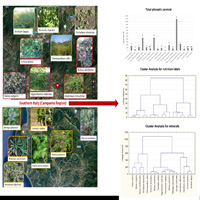Opportunities of spontaneous edible plants collected in southern Italy (Campania Region) as functional food

Accepted: 8 November 2019
HTML: 101
All claims expressed in this article are solely those of the authors and do not necessarily represent those of their affiliated organizations, or those of the publisher, the editors and the reviewers. Any product that may be evaluated in this article or claim that may be made by its manufacturer is not guaranteed or endorsed by the publisher.
In most countries the historical-cultural heritage also refers to the foods traditionally consumed. Southern Italy maintains a strong tradition of dishes based on wild plants, considered an important dietary foundation. Despite this, the nutritional properties and nutraceutical value of some of these plants are little known and, therefore, need to be investigated. Sixteen spontaneous species, traditionally used as food plants, were collected from their natural habitat in four different areas of Campania Region, and their phenolic content and nutritional value were determined according to European model of food labelling. The species analysed resulted quite homogeneous regarding the nutritional value, as demonstrated by cluster analyses. Energy values were always low. Minerals content (especially calcium and potassium) and phenols differed among the species, the sodium-potassium ratio was almost always <0.49, and phenolic content was very high for Rubus ulmifolius. Many of the wild edible plants under study may be considered a good source to dietary intakes of minerals. The species examined showed contents of nutrition values and total phenols useful for preparing mixed soups or salads in order to gain a balanced nourishment. The wild species under study can become a source of new quality horticultural products due to their nutritional and nutraceutical components.
How to Cite
PAGEPress has chosen to apply the Creative Commons Attribution NonCommercial 4.0 International License (CC BY-NC 4.0) to all manuscripts to be published.

 https://doi.org/10.4081/ija.2019.1540
https://doi.org/10.4081/ija.2019.1540



